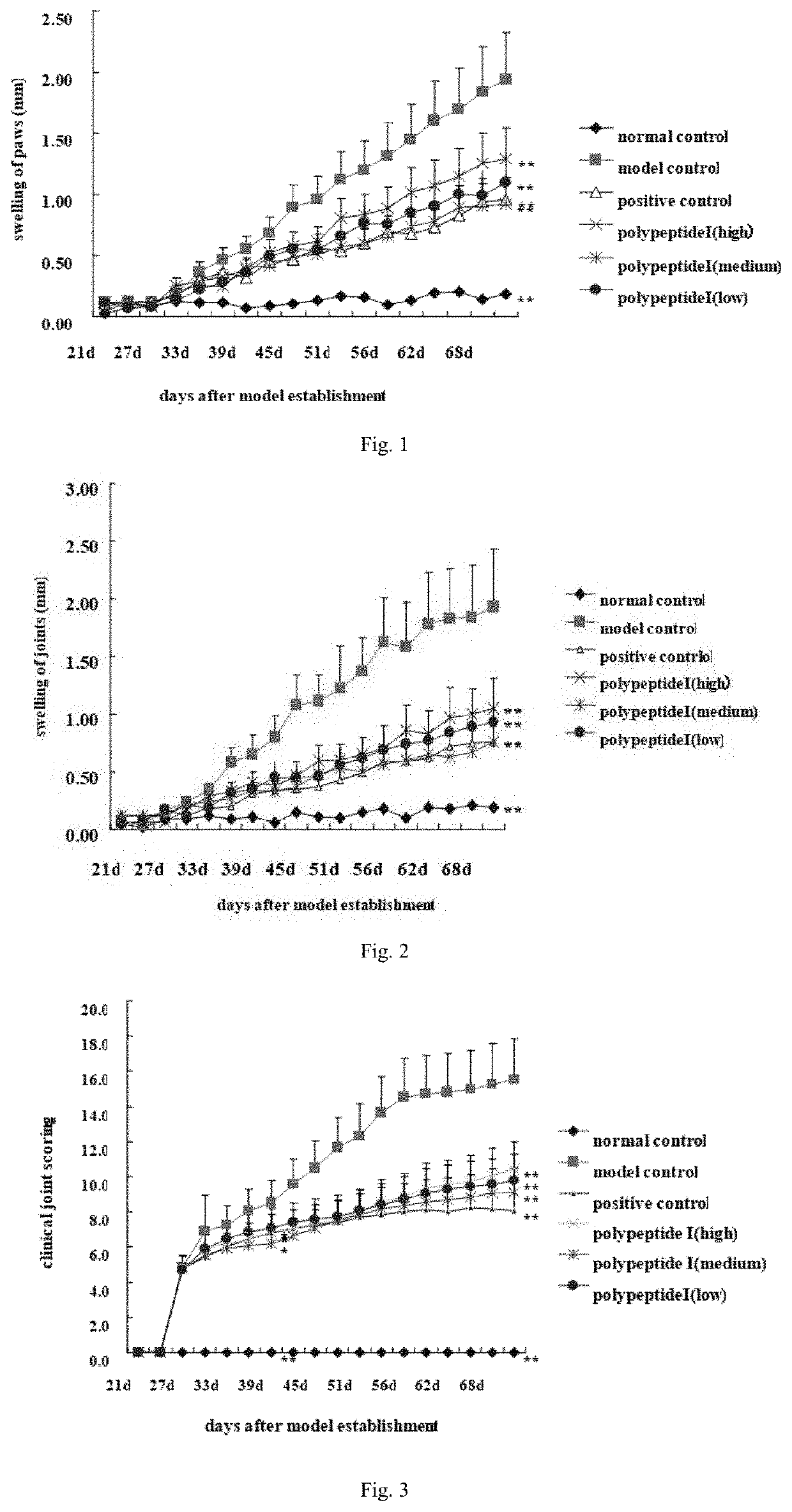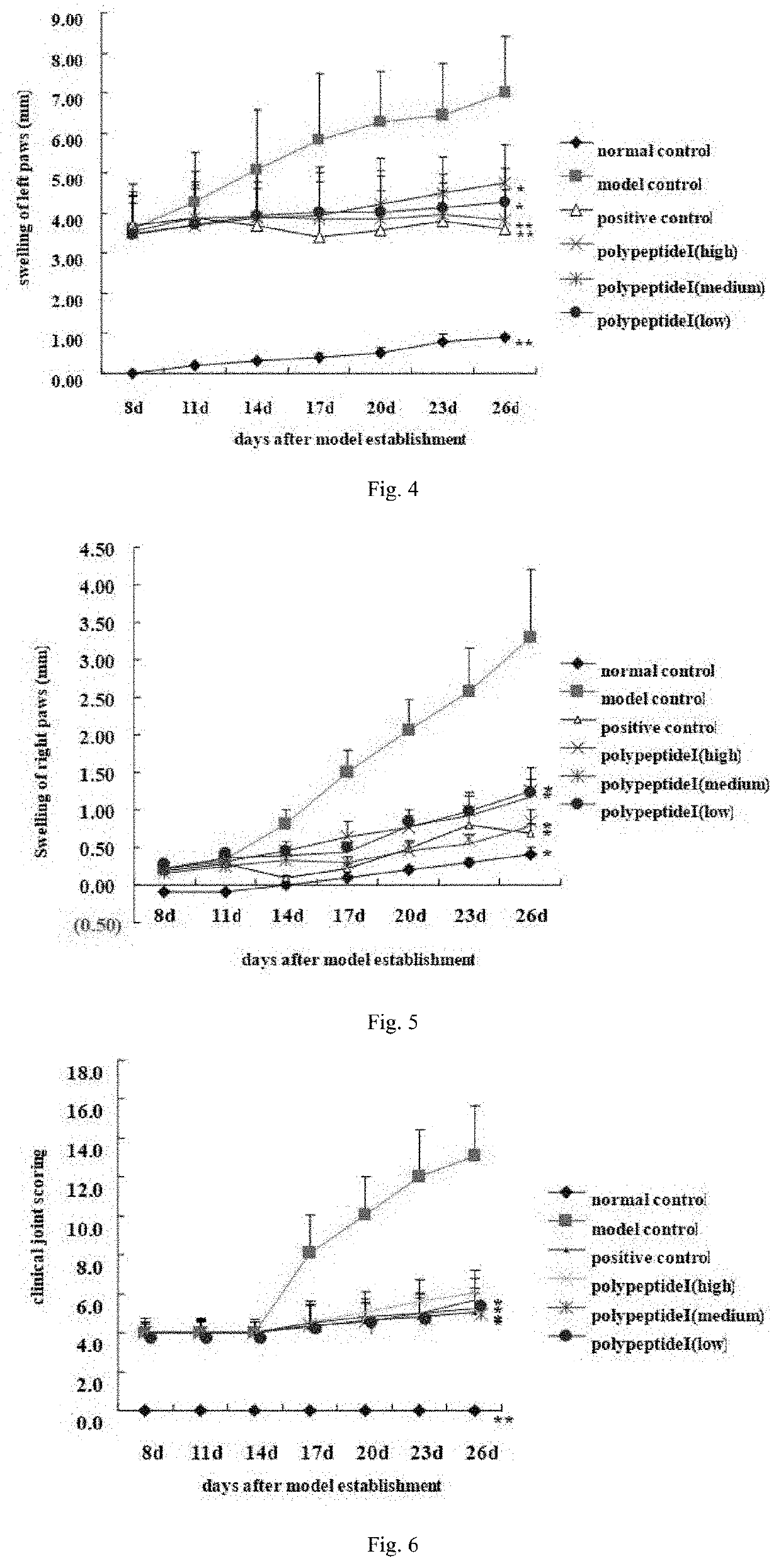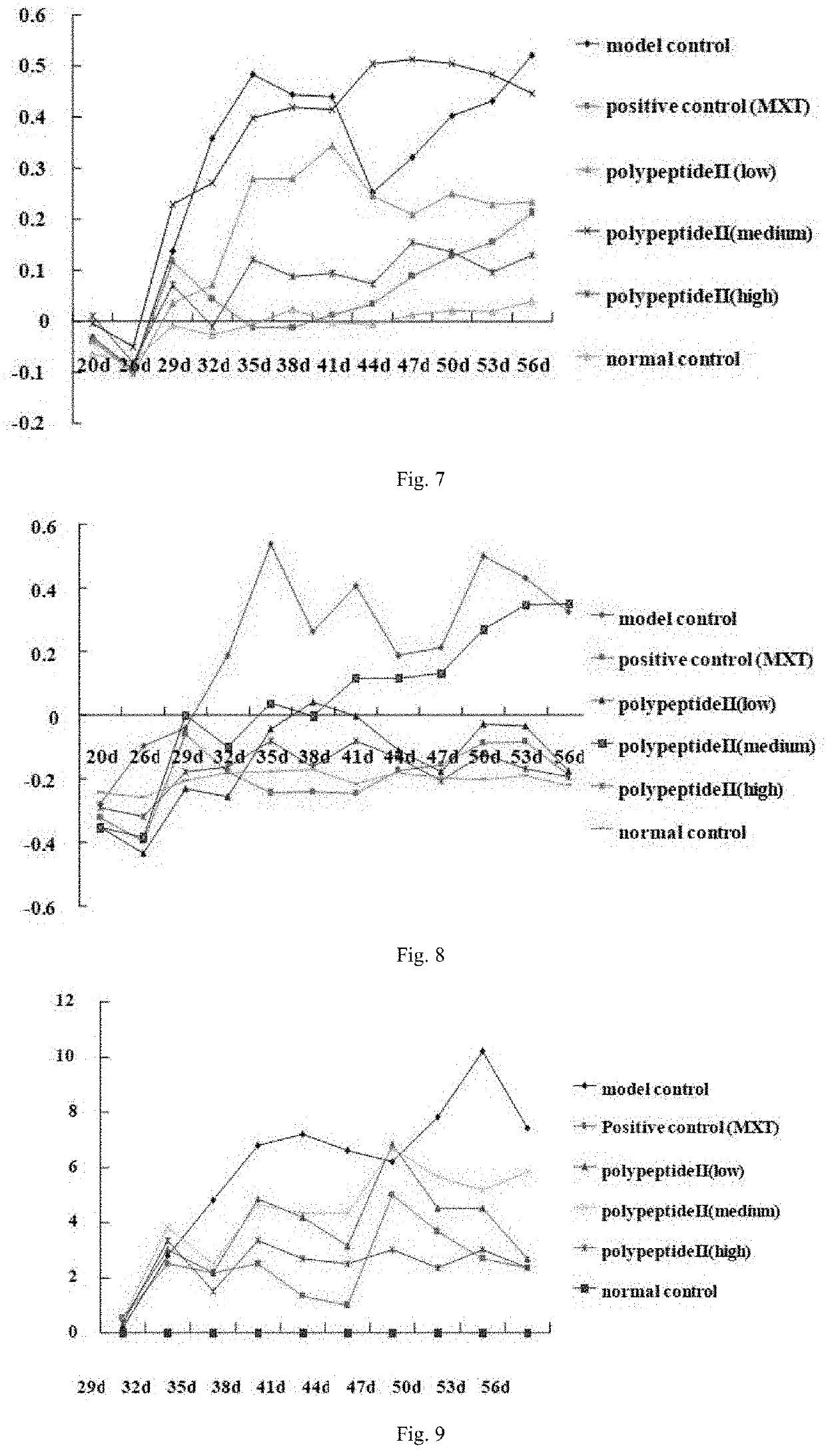Polypeptides in Preparation of Drugs for Treatment or Prevention of Rheumatoid Arthritis
- Summary
- Abstract
- Description
- Claims
- Application Information
AI Technical Summary
Benefits of technology
Problems solved by technology
Method used
Image
Examples
embodiment 1
[0170]The solid-phase synthesis is adopted to synthesize polypeptide I, polypeptide II and polypeptide III. The synthesized products are purified with the high performance liquid chromatography (HPLC), and then their purity is determined by reversed phase high performance liquid chromatography (RP-HPLC). The synthesis method disclosed in prior patents, namely ZL 201110194918.0 and ZL201110370529.9, is adopted in the present invention.
[0171]RESULT: RP-HPLC analysis shows that the purity of the synthesized polypeptides I, polypeptide II and polypeptide III is 96.94%, 99.30%, 96.34% respectively; the result meets the required purity standard.
embodiment 2
[0172]In Vivo Immunoprotective Effect of polypeptide I on CIA Mouse Models
[0173]Investigating the therapeutic effect of polypeptides disclosed in the present invention on mouse collagen-induced arthritis (CIA) by means of establishing CIA mouse models. Taking 60 specific, pathogen-free DBA / 1 mice (provided by Sino-British SIPPR / BK Lab. Animal Ltd, Shanghai, China; animal production license: SCXK (Shanghai) 2008-0016) as animal subjects, randomly dividing 7- or 8-week-old male mice with body weight of 18-22 g into 6 groups, namely, the normal control group, model control group, polypeptide I groups including the low-dose (0.2 mg / kg), medium-dose (0.4 mg / kg) and high-dose (0.8 mg / kg) subgroups and the (methotrexate 1 mg / kg) positive control group. Apart from the normal control group, CIA mouse models are established for all test groups on day 0: Predissolving chicken cartilage collagen type II (cII) into 4 mg / ml solution in 0.1 mol / L acetic acid, and then keeping the solution in a ref...
embodiment 3
In Vivo Immunoprotective Effect of Polypeptide I on AIA Rat Models
[0181]Investigating the therapeutic effect of polypeptides disclosed in the present invention on adjuvant-induced arthritis (AIA) in rats by means of establishing AIA rat models. Taking specific, pathogen-free SD rats (provided by Sino-British SIPPR / BK Lab Animal Ltd, Shanghai, China; animal production license: SCXK (Shanghai) 2008-0016) as animal subjects, randomly dividing 60 male rats with body weight of 140-160 g into 6 groups, namely, the normal control group, model control group, polypeptide I groups including the low-dose (0.1 mg / kg), medium-dose (0.2 mg / kg) and high-dose (0.4 mg / kg) subgroups and the (methotrexate 1 mg / kg) positive control group. Apart from the normal control group, AIA rat models are established for all test groups on day 0 by injecting at the left hind paw of all rats with 0.08 ml CFA containing 10 mg / ml deactivated Mycobacterium tuberculosis (strain H37RA). On day 10 of the experiment, hypo...
PUM
| Property | Measurement | Unit |
|---|---|---|
| Affinity | aaaaa | aaaaa |
Abstract
Description
Claims
Application Information
 Login to View More
Login to View More - R&D
- Intellectual Property
- Life Sciences
- Materials
- Tech Scout
- Unparalleled Data Quality
- Higher Quality Content
- 60% Fewer Hallucinations
Browse by: Latest US Patents, China's latest patents, Technical Efficacy Thesaurus, Application Domain, Technology Topic, Popular Technical Reports.
© 2025 PatSnap. All rights reserved.Legal|Privacy policy|Modern Slavery Act Transparency Statement|Sitemap|About US| Contact US: help@patsnap.com



